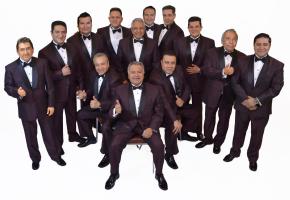Lupe Yoli was born in the small, rural town of San Pedrito, Santiago de Cuba in 1936. She described her hometown as “so poor that no one knew it existed until I got famous.” When she was a teenager, Lupe won a radio contest that enabled her to meet Olga Guillot, a popular Cuban singer in La Habana (Havana), and sing on the radio.
By 1957, “La Lupe” was all the rage in La Habana’s competitive nightclub scene. Her first performances at the club La Red in 1958 catapulted her to fame as she urged pianist Homero Balboa to play “faster, faster.” Soon, she had a dedicated gay and avant-garde following.
In 1960, her marriage to Eulogio “Yoyo” Reyes ended, along with their musical group, Los Tropicuba. When the Cuban Revolution dawned, La Lupe left the country, like many other Cuban artists at the time. Her performances had been criticized for providing a bad example to the state.
Perhaps thinking she might be more appreciated in the USA, La Lupe arrived in New York, in 1963. She soon befriended and recorded with world-renowned Afro-Cuban percussionist Mongo Santamaria. In LA LUPE QUEEN OF LATIN SOUL, Santamaria introduced La Lupe to “an American” jazz audience and accused Tito Puente stole her from his band once she became the “hottest thing.”
She moved from her passionate interpretations of boleros to fusions of Afrocuban music and jazz as well as forms that have come to be identified as salsa. Her performances were once again labeled passionate, violent, and out of control.
In 1964, La Lupe and Tito Puente recorded the Latin classic “Que Te Pedi (What Did I Ask of You)”. For the next four years, she recorded and toured the Latin music circuit in the U.S., Venezuela, Mexico, Puerto Rico, Panama and Spain.
During the late 1960s, Tito Puente started to record with Celia Cruz, and La Lupe struck out on her own, performing and appearing on English language television shows. During this time, the burgeoning Fania Records helped to popularize salsa, the latest Latin music sensation. By 1975, Fania’s new rising star was Cruz, and La Lupe’s career was on the decline. Fania Records ended her contract, and Lupe became destitute.
Even though her popularity was largely restricted to US Latinos, Puerto Ricans on the island, and Latin American audiences, she made a few television appearances in the United States and performed on Broadway in Shakespeare’s Two Gentlemen of Verona with Raúl Julia in 1971
By 1985, La Lupe had rebounded from a descent into homelessness. Having been a lifelong practitioner of Santeria, she then became a born-again Christian, preaching in evangelical testimonials. When filmmaker Pedro Almodóvar used La Lupe’s song “Puro Teatro” in his 1988 film Women on the Verge of a Nervous Breakdown, interest in her music was rekindled.
La Lupe passed away in 1992. She was survived by her husband, William Garcia, and her children Rene and Rainbow. In 2002, New York City renamed the Bronx’s East 140 Street La Lupe Way.



















